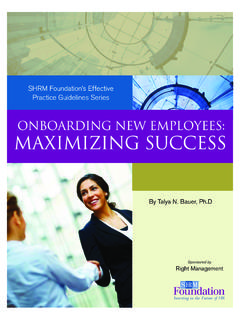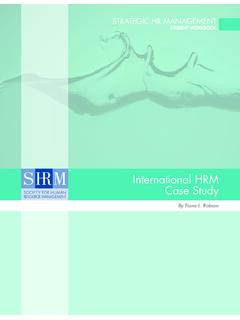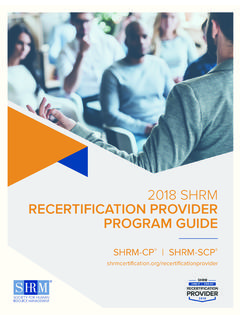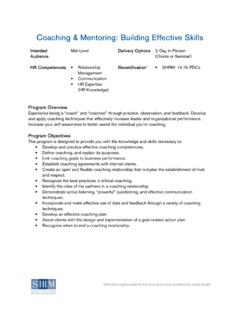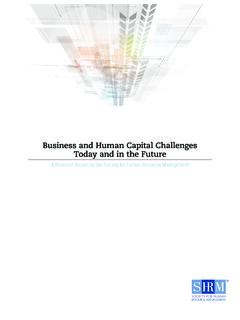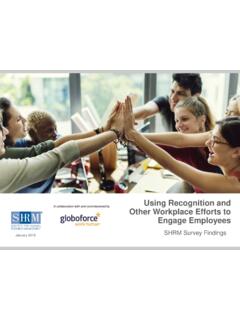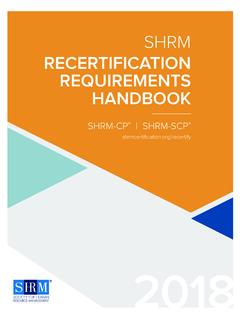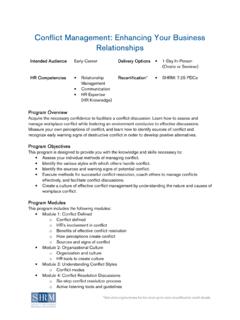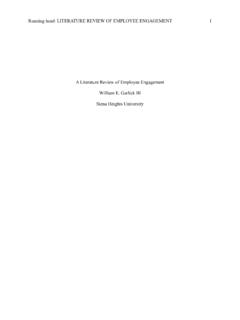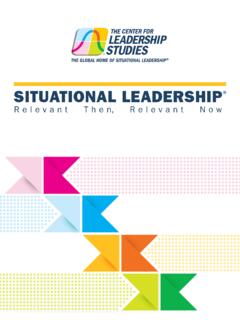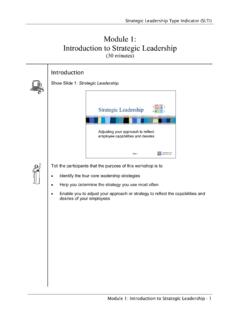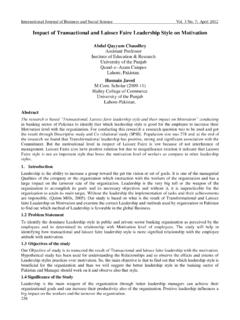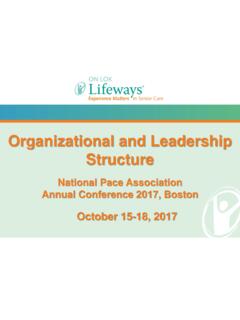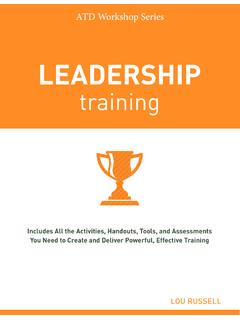Transcription of SHRM Foundation Executive Briefing Wellness Strategies
1 Use and Management of Downsizing By David Chenoweth, , FAWHPS ponsored by HUMANASHR M Foundation Executive BriefingWellness Strategies to Improve employee Health, Performance and the Bottom LineOVERVIEWR esearch shows that the health status of your employees directly influences their work behavior , attendance and on-the-job performance. Therefore, improving employee well-being will result in a more productive workforce. That s why 75 percent of high-performing companies now measure employee health status as a key part of their overall risk management strategy, and many pursue active Wellness programs. However, for Wellness initiatives to succeed, they must be an intrinsic part of an organization s culture.
2 This requires persistent and engaged leadership at all levels. By creating an integrated plan of action, HR professionals can strategically cultivate and leverage on-site resources to generate a healthier workforce, culture and financial bottom HEALTH: DEVELOPING METRICSA variety of modifiable health risk factors, such as excess weight, poor diet, smoking and lack of daily exercise, affect both medical costs and work performance. The best way to measure the prevalence of these risk factors in your workforce is through a health risk assessment, the cornerstone of a good risk management plan. For detailed guidance on how to conduct an in-house estimate of lost productivity costs in your organization, please see the SHR M Foundation publication Promoting employee Well-Being.
3 Research has revealed that although illness is the most common cause of absenteeism, being unwell can affect performance through other means, such as presenteeism. This is defined as being at work but not fully functioning due to illness or other health condition. Presenteeism costs actually far exceed the costs of absenteeism and other health-related losses incurred by organizations. Effective Wellness Strategies can help alleviate both absenteeism and presenteeism, and their related costs. CONTAINING HEALTH CARE COSTSThe results of the health risk assessment can be used strategically to drive high-performing health and work behavior outcomes, thus containing health care costs.
4 There are at least five vehicles for achieving these Create an organizational culture that promotes health and a healthy organizational culture involves both the physical work structure and the employees perception of the work environment. The work environment includes the physical characteristics of the workplace, such as safety policies, noise levels, lighting, air quality, and ergonomically adapted equipment and furniture. The work environment also includes healthy eating options and updated cafeteria menus, smoke-free policies, and opportunities for physical course, building a healthy organizational culture cannot be done in a day. It takes time and is best done gradually.
5 Health risk levels can change in a relatively short period of time, and even minor changes in these levels can significantly alter cost Builds a Healthy Workplace CulturePCL Construction Services, Inc., an employee -owned company based in Denver, Colo., has made Fortune magazine s 100 Best Companies to Work For list for five consecutive years. PCL moves beyond standard health insurance and vision coverage to make health and Wellness part of the everyday work culture. The company provides healthy snack alternatives in its vending machines and covers the costs of gym memberships, local 5K runs and marathons, flu vaccines, and annual on-site health screenings.
6 PCL targets four Keys to Wellness : physical well-being, social and community well-being, financial well-being, and mental and emotional well-being. We really wanted to focus on the whole person, HR advisor Canzona-Hindman says. If you can incorporate all these different pieces, you re going to achieve your goal of a healthy work environment. It has to be part of the culture, not an add-on. 2. Ensure polices enhance employee health and scope and type of company policies reflect an organization s philosophy and commitment to employee health and well-being. These policies should align with and support your health and Wellness goals. Examples of these policies include rules on smoking, drug testing, sick and personal leave, disability insurance, health care benefits, and vacation policies.
7 Of all the benefits employers offer, health care benefits are arguably the most financially and politically challenging in today s economy. As you assess your organization s health and work behavior policies, including the employee health plan options, take some time to gauge what is working, what is not working, and what employees like and dislike. Since the employee benefits package is likely the most visible policy in your organization, it is a good place to start. 3. Offer incentives that motivate employees to engage in healthy employers that offer Wellness programs use some type of incentive to drive employee participation, and nearly two-thirds of these are financial incentives.
8 Ways to Promote Healthier BehaviorCultivate multi-level leadership Solicit input and engagement at all levels to successfully drive a Wellness -initiated cultural transformation. Increase employees physical activityPost signs by the stairwell to remind employees to walk up the stairs instead of taking an elevator, offer fitness classes, encourage employees who sit a lot to take stretch breaks, offer subsidies or discounts for fitness club memberships, and create departmental competitions, rewarding teams that meet designated monthly exercise levels. Encourage good nutritionChange vending-machine items to healthier options, organize a healthy potluck or recipe exchange, offer fruit and vegetable snacks instead of junk food at meetings, and subsidize or discount the cost of heart-healthy entr es in the company employees on healthy lifestylesE-mail health tips to all employees, create and maintain bulletin boards with health information in high-density areas, create a library of books and CDs for employees to check out or use on-site, include a personal health column in the company incentive structure you design.
9 It is vital to establish appropriate standards for employees to meet in order to earn incentives. To be successful, the incentive must target the primary behaviors that influence in mind these guidelines when implementing incentive programs: Reward behaviors that are realistically achievable. Make incentive-targeted programs easily available to employees. Provide employees with regular feedback regarding progress toward Effective Incentives Survey your employees to determine what incentives are likely to motivate them. Provide a variety of incentives to sustain long-term employee participation. Start with a modest allocation ($100 per employee per year) to boost or maintain participation; if needed, gradually increase the allocation.
10 Monitor the impact of existing incentives on participation. Revise the incentive mix when participation levels drop initially, rather than waiting until participation rates have substantially declined. Adjust the type, level, variety and timing of incentives to maximize of the more common health status indicators employers use include body mass index, cholesterol level, blood pressure, physical activity, and tobacco and alcohol use. In many cases, employees are required to meet a minimum number of specified health status indicators (six out of eight, for example) to qualify for an incentive. Another option is to assign a designated dollar amount that can be earned for each health status target Legal ComplianceWhen establishing a Wellness incentive plan, an employer must ensure it complies with federal law, most notably the Americans With Disabilities Act (ADA), the Health Insurance Portability and Accountability Act (HIPAA) and the Genetic Information Nondiscrimination Act (GINA).

